Introduction to the Debate
When it comes to the world of sewing, there’s a long-standing debate among crafters and professionals alike: Is hand sewing as strong as machine sewing? Whether you’re stitching a simple hem or creating a complex quilt, the method you choose can significantly impact the outcome of your project. But which method truly stands the test of time? In this comprehensive guide, we’ll explore the strengths and weaknesses of both hand and machine sewing to help you decide which is best for your next sewing project.
The Historical Significance of Hand Sewing
The Origins of Hand Sewing
Hand sewing is as ancient as human civilization itself. Long before the invention of sewing machines, our ancestors relied on hand stitching to create garments, tools, and other necessities. From the delicate embroidery of ancient Egypt to the robust leather stitching of the Middle Ages, hand sewing has played a pivotal role in the development of human culture.
Hand Sewing in Traditional Craftsmanship
Even today, hand sewing remains a vital skill in traditional craftsmanship. Tailors and artisans across the globe continue to use hand stitching techniques passed down through generations. Whether it’s for fine tailoring, intricate embroidery, or custom-made garments, the art of hand sewing is alive and well, revered for its precision and the personal touch it brings to every piece.
The Evolution of Hand Sewing Techniques
Over time, hand sewing techniques have evolved, incorporating new tools and materials to enhance the strength and durability of hand-stitched seams. From basic running stitches to complex techniques like backstitching and French seams, hand sewing offers a range of options to ensure your seams hold up under pressure. But does this traditional method hold its own against the power and speed of modern sewing machines?
The Advent of Machine Sewing
The Birth of the Sewing Machine
The invention of the sewing machine in the 19th century marked a revolution in the textile industry. For the first time, sewing could be done quickly, efficiently, and with a level of precision that was hard to achieve by hand. The first sewing machines were large, cumbersome, and expensive, but they quickly became indispensable tools for both home sewers and professional tailors.
How Machine Sewing Revolutionized the Textile Industry
Machine sewing dramatically changed the way clothing and textiles were produced. Factories could now mass-produce garments at an unprecedented scale, reducing the cost of clothing and making fashion more accessible to the general public. This shift not only revolutionized the industry but also transformed the art of sewing from a necessary skill into a creative hobby for many.
Comparing Early Machines to Modern Innovations
Today, sewing machines have evolved into highly sophisticated devices capable of a wide range of tasks. From basic models for beginners to advanced machines that can embroider, quilt, and even sew complex patterns, the modern sewing machine is a marvel of technology. But with all these advancements, one might wonder: does machine sewing now surpass the strength and durability of hand sewing?
Strength and Durability: Hand Sewing vs. Machine Sewing

The Strength of Hand-Stitched Seams
One of the main advantages of hand sewing is the control it offers. When you sew by hand, you can adjust the tension and length of each stitch to suit the fabric and the specific requirements of your project. This level of control allows for stronger seams in certain applications, such as when working with delicate fabrics or making repairs.
The Consistency and Precision of Machine Sewing
On the other hand, machine sewing offers unparalleled consistency. A sewing machine can produce even, precise stitches that are difficult to achieve by hand, especially over long seams or with thick fabrics. This consistency can lead to stronger, more durable seams, particularly in projects that require repetitive stitching, such as quilting or garment construction.
Which Is More Durable Over Time?
When it comes to durability, both hand and machine sewing have their strengths. Hand-sewn seams can be incredibly strong, especially when reinforced with techniques like backstitching. However, machine-sewn seams are often more uniform and less prone to issues like loose threads or uneven tension, which can lead to greater longevity in many cases.
Efficiency and Speed: Which Method Wins?

The Speed Advantage of Machine Sewing
There’s no denying that machine sewing is faster than hand sewing. A sewing machine can stitch hundreds of stitches per minute, a pace that’s impossible to match by hand. This speed is particularly beneficial for large projects, like sewing curtains, quilts, or multiple garments, where time is a crucial factor.
Situations Where Hand Sewing Outshines Machines
Despite the speed advantage of machine sewing, there are situations where hand sewing is the better choice. For example, when sewing in tight spaces or on delicate fabrics, hand sewing allows for more precision and control. It’s also easier to make adjustments as you go, ensuring that each stitch is exactly where it needs to be.
Balancing Quality and Speed in Sewing Projects
Ultimately, the choice between hand and machine sewing often comes down to a balance between quality and speed. While machine sewing is quicker and more consistent, hand sewing allows for a level of craftsmanship that machines simply can’t replicate. Depending on your project, you might find that one method is better suited to your needs than the other.
Versatility and Flexibility in Sewing Techniques
Hand Sewing for Delicate Fabrics and Intricate Details
Hand sewing excels in situations that require a delicate touch. Whether you’re working with fine fabrics like silk or lace or adding intricate details like embroidery or beading, hand sewing offers the precision needed to handle these materials with care. It’s also ideal for creating unique, one-of-a-kind pieces that showcase your personal style.
The Adaptability of Machine Sewing Across Various Fabrics
Machine sewing, meanwhile, is incredibly versatile and adaptable. Modern sewing machines are designed to handle a wide range of fabrics, from lightweight cottons to heavy-duty denims. With the right needle and settings, you can easily switch between different types of fabric without sacrificing stitch quality or strength.
Combining Hand and Machine Sewing for Complex Projects
For many sewers, the best results come from combining hand and machine sewing. For example, you might use a machine to sew the main seams of a garment for speed and consistency, then switch to hand sewing for the finishing touches or intricate details. This approach allows you to take advantage of the strengths of both methods, resulting in a finished product that is both durable and beautifully crafted.
Practical Applications: When to Use Hand Sewing

Mending and Repairs
Hand sewing is particularly well-suited for mending and repairs. Whether you’re fixing a tear in a favorite shirt or reattaching a button, hand sewing allows for precise control over each stitch, ensuring a strong, durable repair that blends seamlessly with the original stitching.
Embroidery and Decorative Stitching
If you’re looking to add decorative elements to your projects, hand sewing is the way to go. From embroidery to appliqué, hand sewing gives you the flexibility to create intricate designs that stand out. It’s also a great way to personalize garments and accessories, making them truly unique.
Sewing in Tight Spaces or on Difficult Materials
There are some situations where a sewing machine simply can’t reach, such as sewing in tight spaces or working with materials that are too thick or delicate for a machine. In these cases, hand sewing is the best option, allowing you to carefully stitch in areas where a machine needle might not fit.
Practical Applications: When to Use Machine Sewing

Large Projects and Mass Production
For large projects or mass production, machine sewing is the clear choice. Whether you’re sewing a quilt, making curtains, or producing a line of clothing, a sewing machine can handle the volume and speed needed to complete these tasks efficiently. The consistent, even stitches produced by a machine ensure that each piece meets a high standard of quality.
Quilting and Heavy-Duty Sewing
Machine sewing is also ideal for quilting and heavy-duty sewing projects. The power and precision of a sewing machine allow you to sew through multiple layers of fabric with ease, making it possible to create thick, durable quilts or work with heavy materials like canvas or denim.
Consistency in Professional Work
For professional sewers, consistency is key. Whether you’re creating garments for clients or producing items for sale, a sewing machine ensures that each piece is sewn to the same high standard. This consistency is essential for maintaining quality control and meeting customer expectations.
The Future of Sewing: Will Machines Replace Hand Sewing?

Technological Advances in Sewing Machines
As technology continues to advance, sewing machines are becoming more sophisticated and capable than ever before. Features like computerized stitching, automatic thread cutting, and programmable patterns have made machine sewing faster and more precise, raising questions about whether hand sewing will become obsolete.
The Enduring Appeal of Handcrafted Items
Despite these advances, there’s something special about handcrafted items that machines can’t replicate. The time, care, and attention to detail that go into hand sewing create a unique, personal touch that many people value. Handmade items often carry sentimental value, making them cherished keepsakes or thoughtful gifts.
The Role of Sewing Machines in Modern Craftsmanship
In the modern world, sewing machines and hand sewing each have their place. While machines offer speed and consistency, hand sewing provides the flexibility and personal touch that many crafters and artisans seek. By combining the two, you can create projects that are both durable and beautifully crafted, blending the best of both worlds.
Conclusion
Finding the Balance Between Hand and Machine Sewing
So, is hand sewing as strong as machine sewing? The answer depends on the project, the materials, and your personal preferences. Both methods have their strengths and weaknesses, and the best results often come from combining the two. By understanding when to use each method, you can ensure that your sewing projects are not only strong and durable but also beautifully crafted.
Final Thoughts on the Strength of Hand vs. Machine Sewing
In the end, the choice between hand and machine sewing isn’t about which is stronger—it’s about which method best suits your needs. Whether you prefer the control and flexibility of hand sewing or the speed and precision of machine sewing, both techniques have their place in the world of sewing. By mastering both, you’ll be well-equipped to tackle any project that comes your way.
FAQs
Is hand sewing more durable than machine sewing?
Hand sewing can be more durable in certain applications, especially when using techniques like backstitching. However, machine sewing often provides more consistent and even stitches, which can also lead to durability.
Can hand sewing be as fast as machine sewing?
While hand sewing offers more control and precision, it’s generally not as fast as machine sewing. A sewing machine can complete stitches at a much quicker rate, making it more efficient for larger projects.
What are the best projects for hand sewing?
Hand sewing is ideal for mending, repairs, embroidery, and working with delicate fabrics. It’s also great for adding intricate details or sewing in tight spaces where a machine might not reach.
How do sewing machines handle delicate fabrics?
Modern sewing machines are equipped with settings and needles specifically designed for delicate fabrics. By adjusting the tension and using the right needle, you can sew delicate materials without damaging them.
Is it necessary to know hand sewing if you own a machine?
While not strictly necessary, knowing how to hand sew can be incredibly useful. There are situations where hand sewing is the better option, such as for repairs, fine details, or working with tricky materials.
Visit our Sewing Machine Shop for the best sewing machine deals.
For more insightful articles, visit our Medium page !

